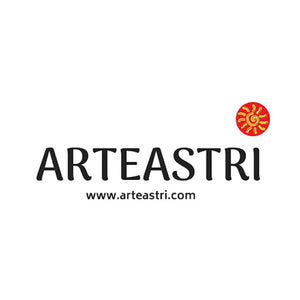Dokra Jewellery: A Handcrafted Souvenir of Indian History
Our love for handcrafted products at ArtEastri continues and keeps growing. Out of all the elegant handcrafted products we have to offer, Dokra Jewellery surely stands out! With its intricate and complex designs, the art of Dokra has created an immense impact in the world of handcrafted jewellery. The art of Dokra can be traced back to more than 4000 years and has been considered as one of the most precious heritages from the Mohenjo-Daro and Harappa civilizations.

Today, we bring to you the story of The Art of Dokra!!
The History of Dokra
The art of Dokra entails non ferrous metal casting using the “lost wax casting” technique. Lost wax technique is basically casting an original structure in which it is used to create a duplicate structure using the same materials. This technique is the reason why Dokra Jewellery achieves an unbelievable amount of intricacy. The art has been prevailing in the world for more than 4000 years now and has been considered one of the richest heritages from the Harappa and Mohenjo-Daro civilizations. The dancing girl of Mohenjo-Daro is one of the world's most popular displays of the Art of Dokra.
The rustic simplicity of the Dokra Jewellery is appreciated all around the world. The artisans who put in their blood and sweat in order to achieve it have always been in great demand within art connoisseurs. Some of the most popular artifacts are Dokra horses, elephants, peacocks, religious idols and measuring bowls. The clean distinctive detailing and enchanting folk motifs is what gives Dokra an edge over all handcrafted jewellery techniques.
The name “Dhokra'' is derived from the tribes who were traditional metalsmiths based in the states of West Bengal and Odisha. They are known as the “ Dhokra Damar”. The lost wax casting technique is named after this tribe. The presence of this tribe can be found in the states of West Bengal, Odisha, Jharkhand, Rajasthan and even the southern state Kerala! Some of the popularly known Dhokra/Dokra crafts in India are from Dwariapur in West Bengal and Adilabad Dokra from Telangana. This lost wax technique can also be found in the countries of China, Egypt, Malaysia, Nigeria and Central America etc.
The speciality of this art is to create eye-catching artifacts using scrap materials. One of the main materials used in this process is Brass. The core of Dokra products is filled with clay. The artisans involved in creating such masterpieces mainly rely on natural resources such as wax, resin, wood from the forest and riverbed clay. In rural areas, a hole is dug in the ground for heating purposes which acts as a firing oven. With time, the availability of raw materials has changed its course, now the metals used in making the artifacts are available in the form of wires in different shapes and diameters. The hardwork and dedication put in by various craftspersons from across the world in creating such beautiful pieces of jewellery is quite commendable and what makes the Art of Dokra special in its literal sense.

The Art and Craft of Dokra Jewellery is one of the ancient techniques for which we should feel privileged to have prevailing in the generation we live. It started with motifs of gods and goddesses, and now has gained a sense of style and statement. We, at Arteastri, would like to appreciate all the efforts put in by various artisans from India and all around the world
Also read what we're loving this festive season!



